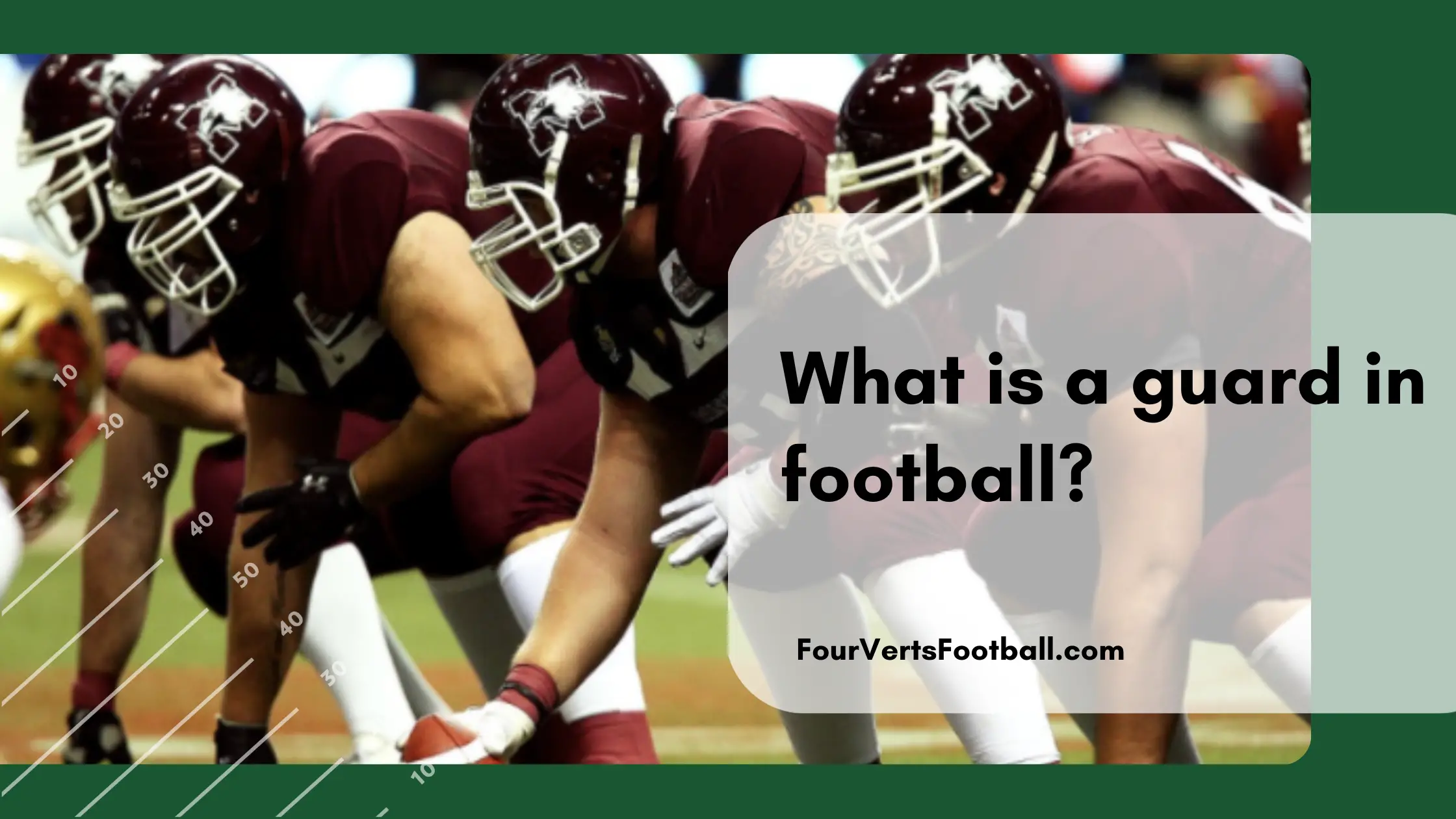A guard in football is an offensive player that is responsible for protecting the ball carrier from the opposing team’s defenders. Offensive guards are responsible for guarding the quarterback on passing plays as well as protecting the halfback on running plays.
Guards work on the interior of the offensive line meaning they have another offensive lineman that lines up outside of them. There are two guards on the field on any given play.
Additionally, guards are one of the few offensive positions that do not touch the football.
Responsibilities
As we mentioned earlier the guard position has multiple responsibilities in the offense. Below we will cover the main responsibilities of guards when they are on the field.
Run Blocking
Run blocking is often the largest responsibility of a guard. Unlike offensive tackles, guards are not evaluated mainly for their pass blocking.
As a guard run blocking is incredibly important because it is very common for the running back to run in the gap that the guards create. Running in between the tackles is the most common way to run a football. And if the halfback goes between the tackles he will either have a guard on his left or right when he runs through a gap in the line.
Additionally, if a running back runs outside the tackle it is common for the guard to become a lead blocker. In these plays, the guard “pulls” and runs out of his position all the way around the formation.
He then runs downfield in front of the running back and blocks any opponent that comes his way. When watching football you will notice the majority of great rushing offenses have high-quality guards that lead the way.
Pass Protection
Though not as scrutinized as much as tackles, pass protection is still a very important factor in a guards play. On passing plays, they are responsible for ensuring that no defensive players come through the inside of the line.
This means guards have to take on blitzing defenders as well as defensive tackles. Defensive tackles are the largest and heaviest players in football which makes this quite a tough task.
Oftentimes guards and centers will work together in a “double team” in order to block especially skilled or strong defensive tackles.
Guard Attributes
Quick Feet
One of the most important aspects of being a guard in football is quick feet. When it comes to pass protection it is common for a guard to take a few quick steps in order to take on an incoming pass rusher.
Often times guards will be assigned an area to block. This means they may not know which player is their assignment and will have to react quickly when the player is identified.
When it comes to run blocking speed is crucial for guards. Of all positions on the offensive line it is guards that block downfield the most. On these plays the quick feet of guards allow them to beat the ball carrier to the second level of the defense.
Effectively blocking downfield can generate some huge plays for the offense.
Strength
Though this is a rather obvious trait for any football player it is especially important for guards. As we covered earlier it is guards that are typically tasked with blocking the largest players on the field, defensive ends.
In order to stop these players guards will need some significant strength of their own. Additionally, on running plays guards may have to move these defensive linemen to open a hole for the half back.
Grit
Though this isn’t a measurable quality in a player grit is a very important aspect. As a guard you are playing in the most gruelling area of the field. The battle between defensive and offensive lineman is a difficult one and guards must face it every play.
On top of that guards do not have the fanfare of offensive tackles and they don’t touch the ball each play like a center.
To play the guard position in football you have to have the grit to fight it out in the trenches without receiving much appreciation.
Build
Like most offensive lineman guards are of the heavier players on a football team. In the majority of cases they are slightly shorter than offensive tackles but overall have a very similar build.
They must maintain a large amount of weight in order to compete with the heavier defensive positions like tackles. Though you will find that guards are typically somewhat lighter than tackles and centers as they must be able to maintain some speed when blocking downfield or pulling.
Positioning
The positioning of guards on the football field is the same every play. There is one left guard and one right guard on the field at all times.
The guards are lined up inside the tackles and outside of the center. Meaning the left guard will be one position to the right of the left tackle. While the right guard will be positioned one spot to the left of the right tackle. The center will line up in between the two guards.
Concluding Thoughts
We hope you enjoyed this guide to offensive guards in football. If you have any more questions regarding what a guard is in football please to sure to reach out in the comments below as we will be happy to answer.

